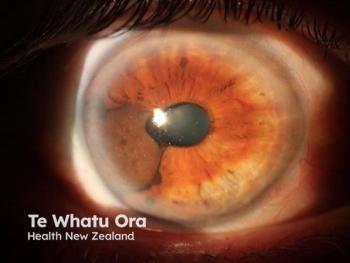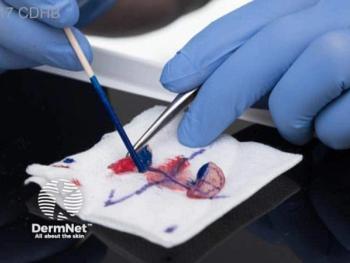
Step up Surveillance Strategies for Skin Cancer
More detailed tumor classifications, patient data advance surveillance strategies for the high-risk patient population.
Advances in skin cancer surveillance in the high-risk patient population provide a range of aggressive new approaches for preventing or limiting the risk of disease development and its quick progression, said Rajiv Nijhawan, MD, in a presentation at the 2021 American Academy of Dermatology Virtual Meeting Experience (AAD VMX).1
Nijhawan is associate professor of Mohs micrographic & reconstructive surgery and director of High Risk Skin Cancer/Transplant Clinic, at the University of Texas (UT) Southwestern Medical Center in Dallas. He outlined this 3-pronged strategy for maximizing the benefit of these new tools:
- Adopting optimal surveillance recommendations for all patients with skin cancer, “with a special focus on patients with high-risk lesions” (for example, advanced squamous cell carcinoma (SCC)) and transplant recipients;
- Applying data to better identify and create monitoring schedules for patients at high risk;
- Considering underserved patients at risk, including diverse populations.
Diagnostic work is being advanced with new data and directives. Tumor biology remains a cornerstone of risk assessment. However, 2020 updates to the National Comprehensive Cancer Network®’s (NCCN)
“Before [the updates], the NCCN guidelines on cSCC divided tumors into low risk versus high risk,” Nijhawan said. “Now they're subdivided into low risk, high risk, and very high risk.”
What features to watch for in a patient at high-risk:
- Size and differentiation;
- Perineural or lymphovascular invasion;
- Genetic syndromes;
- Tanning bed use.
“Staging and classification systems are ever-evolving as we add more and more data. Doctors have to stay on top of those changes because they help provide better care for patients,” said Nijhawan.
The NCCN guidelines are more than an initial diagnostic tool. They detail optimal surveillance schedules based on risk level, taking into consideration additional concerns such as local recurrence, new regional disease and regional recurrence or distant metastases.
Improving surveillance often requires education for both the patient and their medical team. “The dermatologist needs to talk to transplant patients before the transplant and explain that their risk [of skin cancer] is going to increase—and may keep increasing every year,” said Nijhawan. “The patient needs to be made aware of the importance of surveillance so that skin cancer can be detected as early as possible.”
Assessment of patient factors in surveillance is intensifying from early detection alone to “early and vigilant detection, intervention and treatment,” said Nijhawan. Like tumor surveillance, patient monitoring is becoming more individualized and more complex. But, without clear guidelines like those for tumor biology, there are some specific patient subgroups that warrant closer monitoring, he added.
Consider more frequent or more comprehensive surveillance for these patients, he added.
- Any of the more than 300,000 people in the United States who have had organ transplants. Specifically, white males, older than age 50 with heart/lung transplants. “Melanoma is still more deadly for this group,” he added.
- Patients with chronic lymphocytic leukemia (CLL). “We know that sSCC tends to be more aggressive in patients with CLL, and they have poorer outcomes with melanoma and SCC as well,” Nijhawan said. “Interestingly enough, we also know this group has low compliance for cancer screening. They should be seen more frequently. We also need to educate our colleagues who are managing patients with CLL that they should see their dermatologist more often.”
- Patients with darker phototypes. “We tend to see and screen more patients that are I or II on the Fitzpatrick scale, but we know skin cancer can occur in any population,” he said. Watch for BCC as the most common nonmelanoma skin cancer (NMSC) in Chinese, Japanese, and Hispanic populations (as well as Caucasians) and SCC as the most common NMSC in Black and Asian Indian populations. In some diverse populations, SCC presents in more protected sites on the body.
Effective surveillance plans for any high-risk patients require collaboration, whether from the individual or from their medical team. That can be a challenge, particularly for transplant recipients.
“Higher risk patient populations can sometimes be overwhelmed with frequent visits to their other physicians, lab work and biopsies,” he said. And, their medical team may be more focused on their own specialty than a 360-degree approach covering all aspects of patient care.
“Sometimes a physician’s focus tends to be on salvaging the main organ that was transplanted or another single aspect of patient health,” said Nijhawan. “It's the dermatologist’s special responsibility to ensure that not just the patients but also the referring and transplant physicians understand the risk for skin cancer and the importance of screening so that they refer patients to us as early as possible.”
Surveillance is also the patient’s responsibility. “In my practice, we always teach our patients how to perform exams either alone or with the help of a partner, especially in areas that are hard to see,” he said.
Nijhawan recommended comprehensive screening as part of the surveillance strategy to better understand the context of the individual patient’s disease.
“We screen every patient pre-transplant, as well as those who have family members with melanoma or genetic syndromes, patients who used tanning beds extensively and those with a history of having been on kidney medications,” he said. “Take the time to educate patients at high risk for skin cancer regarding skin protection and behavior modification as early as possible, especially if you know their baseline and they have an increased risk because of their past behaviors or genetic predisposition.”
Disclosure:
Nijhawan reported no relevant or financial disclosures.
Reference:
1. Nijhawah R. Pearls for surveillance and management of high-risk skin cancer patients. Presented at: American Academy of Dermatology Virtual Meeting Experience (AAD VMX); April 23-25, 2021.
Newsletter
Like what you’re reading? Subscribe to Dermatology Times for weekly updates on therapies, innovations, and real-world practice tips.

















